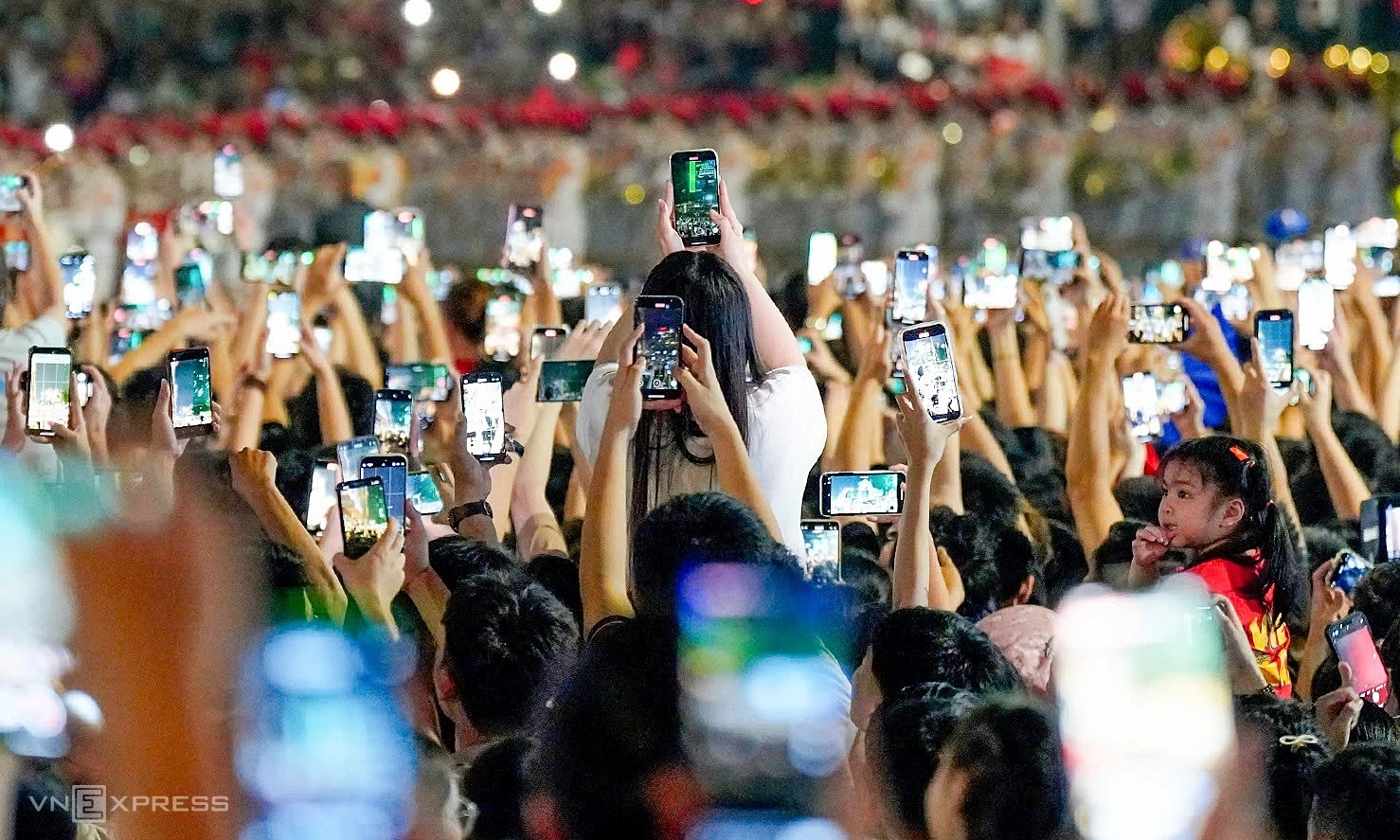Prof Do Trung Ta, the former Minister of Post and Telecommunications, speaks to VnExpress about the decision to break up the telecom monopoly two decades ago, a move that made mobile phones more accessible.
Now 80, he served as deputy director general of the General Department of Post and chairman of the Vietnam Posts and Telecommunications Group before becoming the minister.
Over 20 years ago he helped make decisions that reshaped Vietnam’s telecom market, including opening it to competition by allowing new companies to freely enter the industry.
Do Trung Ta, the former Minister of Post and Telecommunications. Photo by VnExpress/Duc Huy
– In the early 1990s, mobile phones were luxury items for the wealthy. What made them more mainstream in just a few years?
– The postal sector had experienced rapid growth between 1993 and 2000. Vietnam’s telecom network went from an outdated analog system to full digital. The number of telephones rose from one for every 100 people in 1995 to 4.2 by 2000, and the country launched its internet service in 1997. The shift toward a market economy set the stage for reform and competition.
Mobile services were expensive then.
Network activation fees and call charges were high compared to people’s incomes and so businesspeople and executives made up most of the customer base.
All this changed after the sector decided to break up its monopoly and open up the market. We adopted the GSM roaming cellular technology to connect with other countries.
Viettel was founded in the early 2000s.
As soon as the market opened up, tariffs fell noticeably. Mobile phones became so common that even farmers had them. Access to telecom services expanded from cities to rural areas.
This was a huge milestone for mobile carriers and a success for the government’s management of the telecom sector.
– To create competition, you had to break VNPT’s monopoly despite being its chairman. How difficult was that decision?
– The VNPT board of directors supported the policy at the time. Later Viettel was given a two-year monopoly in voice over internet protocol (VoIP) services though VNPT had prepared to launch the service earlier.
Revenues from VoIP provided Viettel with the capital to invest in its mobile network.

Viettel launches its mobile network with the prefix 098 on Oct. 15, 2004. Photo by VnExpress/ST
– How did competition change Vietnam’s telecom sector?
– Competition expanded the telecom market and brought services to previously overlooked rural areas. It also pushed companies to improve their performance. VNPT’s revenues and profits did not decline.
Without competition, the market would have been at a standstill. The introduction of new companies forced existing players to innovate, improve their efficiency and operate with responsibility. Each competitor added pressure for improvement and VNPT had to make major changes.
Competition also benefited consumers and businesses, and the government got more tax revenues.
– Along with opening the market, why did you insist on choosing GSM technology over CDMA?
– At the time Vietnam faced a choice between two cellular technologies: GSM from Europe and CDMA from the U.S. GSM had been introduced in Vietnam in the 1990s, while CDMA arrived later and was less compatible.
CDMA had some technical advantages but was not widely commercialized. Only a few countries such as the U.S., Japan, South Korea, and Hong Kong were using it. Our telecom sector needed a technology that was advanced, compatible and global.
Following through with CDMA 2G would have been a costly option. It made upgrades to 3G difficult and left older infrastructure obsolete. CDMA 2G networks in Vietnam shut down five years after launch.
By the mid-2000s, GSM became the standard due to its lower equipment costs and wide global coverage.
– Do you have any regrets during your time as the leader of the telecom sector?
– I had some plans that never came to fruition. One was to buy mail planes to transport goods and passengers between the north and south. Another was to partner with Hong Kong to use 800 of their vehicles for taxi and cargo services.
I also regret that the sector missed two chances to include the word “technology” in its name. The first proposal was to establish the Ministry of Post, Telecommunications and Information Technology.
The second was to rename the Ministry of Post and Telecommunications as the Ministry of Information Technology and Communications.
Both were rejected by the National Assembly to avoid confusion with the Ministry of Science and Technology, and ‘technology’ was dropped.
– Post and telecom are now under the new Ministry of Science and Technology. What do you think about this change?
– The sector has had a remarkable 80-year history, and I am glad to see it become a part of the new ministry.
Information technology, innovation and digital transformation are essential for building a strong and sovereign nation. The sector has focused its efforts on advancing Vietnam’s science and technology. The new ministry will help Vietnam carry this momentum into the digital era.

Thousands of eventgoers use mobile devices at an event in August 2025. By the end of 2024, Vietnam had 94 mobile broadband subscriptions per 100 people and 4G access for 99.8% of the population. Photo by VnExpress/Nguyen Dong
– What do you think should be done to turn technology into products that benefit the economy?
– Businesses should be the center of innovation. We must tie research to commercialization and deliver final products to the market. Scientists should be allowed to contribute to this process. There should always be five areas of focus: strategy, policy, mechanism, technology, and people.
The government has announced a list of 11 strategic technologies. Companies in these programs are required to create products and services that can be applied nationwide.
– You talked about ‘four transformations’ in telecommunications before. What should be the focus today?
– The previous focus was on smarter networks, globalized businesses, standardized quality of life, and a skilled workforce.
In the digital era I believe Vietnam needs a new set of priorities: modernized digital infrastructure, globalized potential, a standardized digital society, and a skilled workforce.


